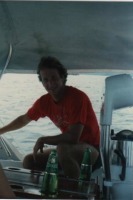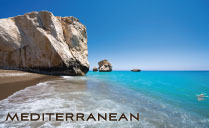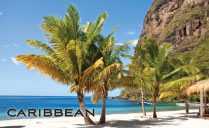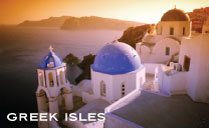Paradise Found by Captain John Borden
The Virgin Islands, Part II, St. Croix
17.5 N.Lat / 65.0 W.Lon
 Hired straight out of college as a manager trainee by the Buccaneer Hotel and Resort on St. Croix in the U.S. Virgin Islands, my brother William had been in “America’s Paradise” for nearly a year before I joined him. While his salary was a modest one and much of his apprenticeship consisted of menial tasks and grounds care, he was assured there would be ample room for managerial advancement. Sporting a large colorful button bearing his title, William soon bonded with the other manager trainees at the Buccaneer, or Buck-a-year, as they were apt to call it. One day on laundry detail with a fellow MT, William was shocked to discover his co-worker had been an aspiring manager in the hotel training program for nearly ten years. Suddenly, the button lost its luster and, subsequently, the Buccaneer lost one of its valued employees.
Hired straight out of college as a manager trainee by the Buccaneer Hotel and Resort on St. Croix in the U.S. Virgin Islands, my brother William had been in “America’s Paradise” for nearly a year before I joined him. While his salary was a modest one and much of his apprenticeship consisted of menial tasks and grounds care, he was assured there would be ample room for managerial advancement. Sporting a large colorful button bearing his title, William soon bonded with the other manager trainees at the Buccaneer, or Buck-a-year, as they were apt to call it. One day on laundry detail with a fellow MT, William was shocked to discover his co-worker had been an aspiring manager in the hotel training program for nearly ten years. Suddenly, the button lost its luster and, subsequently, the Buccaneer lost one of its valued employees.
The Buccaneer is actually quite a beautiful resort with part of its 18-hole golf course set on a bluff overlooking the azure Caribbean Sea and the rest of the Virgins, discernible 35 miles north on the horizon. The Armstrong family, proprietors of the Buccaneer Resort, also owns a nice chunk of St. Croix itself, not to mention the islands’ largest car dealership. Fast food, shopping centers, public housing and many more by-products of American society are now commonplace. You need, however, only to take a walk along any of St. Croix’s alluring beach coves or ride on horseback through the rain forest to understand why it is called “America’s Paradise”.
 Several months after leaving the Buccaneer, with few viable employment prospects, William was ready to pack his bags when he chanced upon a beach house listed in the St. Croix Avis. It turned out to be exactly what he had hoped and has been his home for the past twelve years. Set on the sandy south shore of St. Croix, William’s plot is part of Estate Whim, once the largest and most prosperous Danish sugar cane plantation in colonial history. While St. Croix has the distinction of being ruled by an unprecedented seven different nations, it was the Danes of over three hundred years ago who were the most industrious. They built roads and villages and farmed their enormous estate plantations.
Several months after leaving the Buccaneer, with few viable employment prospects, William was ready to pack his bags when he chanced upon a beach house listed in the St. Croix Avis. It turned out to be exactly what he had hoped and has been his home for the past twelve years. Set on the sandy south shore of St. Croix, William’s plot is part of Estate Whim, once the largest and most prosperous Danish sugar cane plantation in colonial history. While St. Croix has the distinction of being ruled by an unprecedented seven different nations, it was the Danes of over three hundred years ago who were the most industrious. They built roads and villages and farmed their enormous estate plantations.
Today the two primary townships-Christensted to the east and Frederiksted on the west end-are testaments to colonial Danish architecture. Unfortunately, the agricultural prowess of the island’s past is all but forgotten now. In fact, you have to go back yet another three hundred years before the Danes to find inhabitants so rooted in St. Croix’s agronomy.
 The Arawak Indians, likely the very first natives, flourished in a simple agrarian society as close to paradise as one can imagine. Food was abundant: from the sweet potatoes, star apples (carambolas), cashews and guava fruit cultivated ashore, to the fresh conch, fish and lobster found in the warm bounty of the Caribbean Sea. Only the fertility of one’s garden established individuals in any semblance of social order. The land and sea gave the Arawak Indians life and, in return, they gave the earth a reverence beyond our twentieth century conception. The fall of this utopia came not at the hand of European colonists as one might suspect, but from a far more savage aggressor. Cannibal warriors known as Caribes mercilessly slaughtered their way through every last settlement of the peaceful Arawaks who once populated the entire Eastern Caribbean. The Caribes hacked their way up from what is now Venezuela. By the mid 1300s even the northern Arawaks of St. Croix would fall victim to this cruel genocide.
The Arawak Indians, likely the very first natives, flourished in a simple agrarian society as close to paradise as one can imagine. Food was abundant: from the sweet potatoes, star apples (carambolas), cashews and guava fruit cultivated ashore, to the fresh conch, fish and lobster found in the warm bounty of the Caribbean Sea. Only the fertility of one’s garden established individuals in any semblance of social order. The land and sea gave the Arawak Indians life and, in return, they gave the earth a reverence beyond our twentieth century conception. The fall of this utopia came not at the hand of European colonists as one might suspect, but from a far more savage aggressor. Cannibal warriors known as Caribes mercilessly slaughtered their way through every last settlement of the peaceful Arawaks who once populated the entire Eastern Caribbean. The Caribes hacked their way up from what is now Venezuela. By the mid 1300s even the northern Arawaks of St. Croix would fall victim to this cruel genocide.
 The Caribes chose narrow Salt River, situated at the base of the highest northern mountains, for their stronghold on the island they dubbed Ay-Ay. On November 14, 1493, unaware of the Caribes’ presence, Christopher Columbus, who named the island “Santa Cruz” (meaning Holy Cross), sent a landing party up Salt River in an attempt to refill his fresh water casks. There is very little mentioned in his log of the very first mortal conflict between Europe and America. Columbus’ men were forced to withdraw, but not until after one of the landing party had been speared straight through the chest.
The Caribes chose narrow Salt River, situated at the base of the highest northern mountains, for their stronghold on the island they dubbed Ay-Ay. On November 14, 1493, unaware of the Caribes’ presence, Christopher Columbus, who named the island “Santa Cruz” (meaning Holy Cross), sent a landing party up Salt River in an attempt to refill his fresh water casks. There is very little mentioned in his log of the very first mortal conflict between Europe and America. Columbus’ men were forced to withdraw, but not until after one of the landing party had been speared straight through the chest.
The unknown people encountered by Christopher Columbus may be difficult to understand by our twentieth century standards. Columbus knew as little about what he would encounter as we would in our own dreams. The Caribes believed that to consume a man’s flesh and blood was to acquire not only his unique knowledge, but his complete soul. According to their curious faith, the souls of the consumed were revealed to the consumer in a dream state where all beings were eternally destined after their contribution to this barbarous banquet. Ironically, the fierce nature of the Caribe Indians seems to haunt the island of St. Croix to this day. Why the island has not been able to shed this violent stigma absolutely baffles me. With a diverse economy, spectacular fishing, sailing and diving, the largest and lushest of the Virgin Islands is the least frequented by tourists and yachtsmen.
 I first arrived in St. Croix with my mother and father. We were all anxious to see the house which was truly William’s whim. Off its southwest locale, there is little coral break water to slow the syncopated waves from lapping the sandy shore. With a view of the Caribbean Sea, the open air bedrooms are quite conducive to vivid dreams. On a still night, sleeping in the house for the first time, my mother was visited by four Caribe warriors. In her dream state she perceived these apparitions to be searching into her very being to judge whether she and her family would be allowed to stay. Finally, a decisive calm transformed the wild-eyed figures, they nodded and were gone. The incident deeply intrigued my mother, inspiring her to reproduce these specters on canvas. This was the only such dream she or any member of our family would have. Despite it, none of the mystery of dark mystique of the island has ever deterred us. For my brother and his family, St. Croix is not unlike the island sanctuary cherished by the peaceful Arawaks. For William, this tropical paradise is his home.
I first arrived in St. Croix with my mother and father. We were all anxious to see the house which was truly William’s whim. Off its southwest locale, there is little coral break water to slow the syncopated waves from lapping the sandy shore. With a view of the Caribbean Sea, the open air bedrooms are quite conducive to vivid dreams. On a still night, sleeping in the house for the first time, my mother was visited by four Caribe warriors. In her dream state she perceived these apparitions to be searching into her very being to judge whether she and her family would be allowed to stay. Finally, a decisive calm transformed the wild-eyed figures, they nodded and were gone. The incident deeply intrigued my mother, inspiring her to reproduce these specters on canvas. This was the only such dream she or any member of our family would have. Despite it, none of the mystery of dark mystique of the island has ever deterred us. For my brother and his family, St. Croix is not unlike the island sanctuary cherished by the peaceful Arawaks. For William, this tropical paradise is his home.





